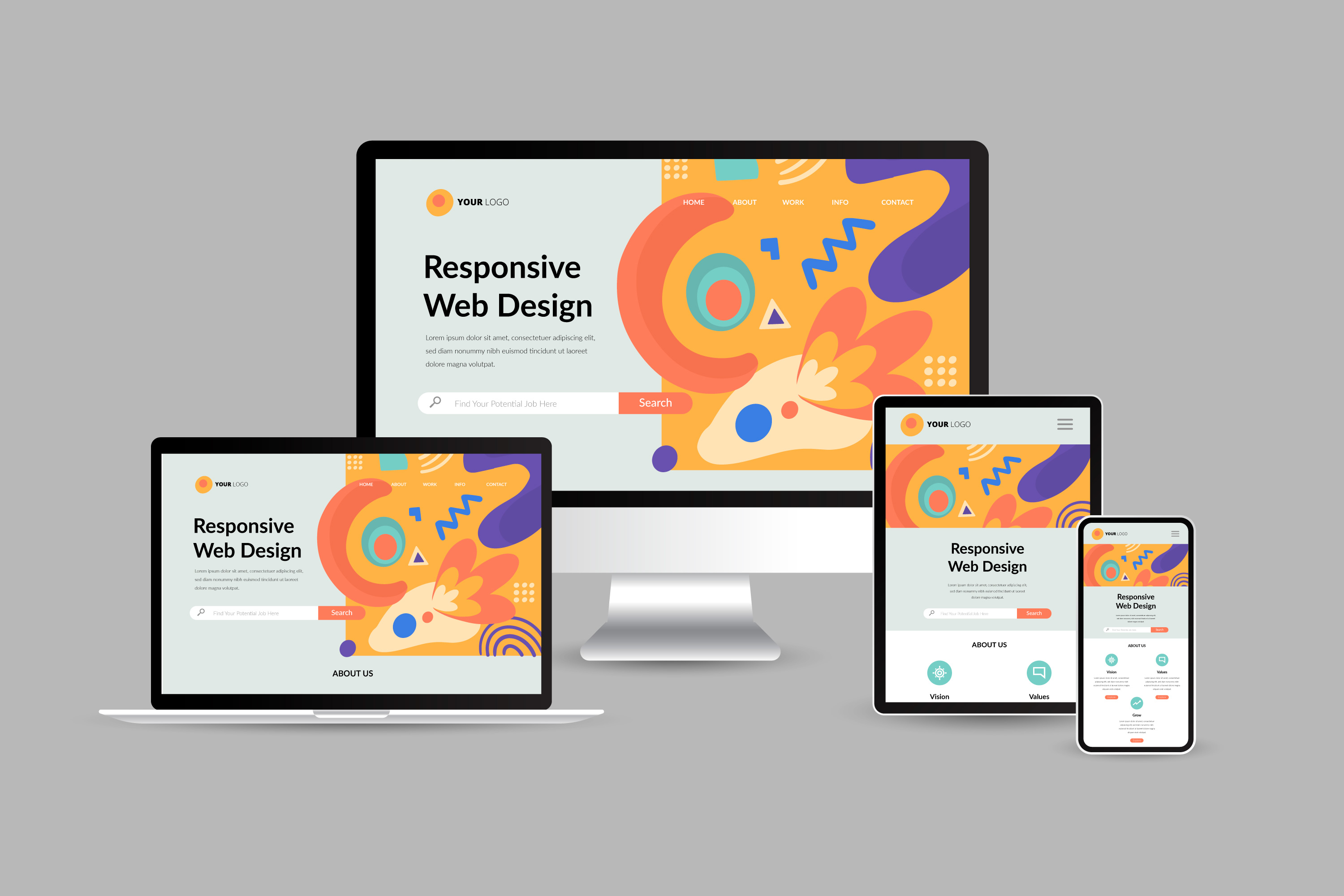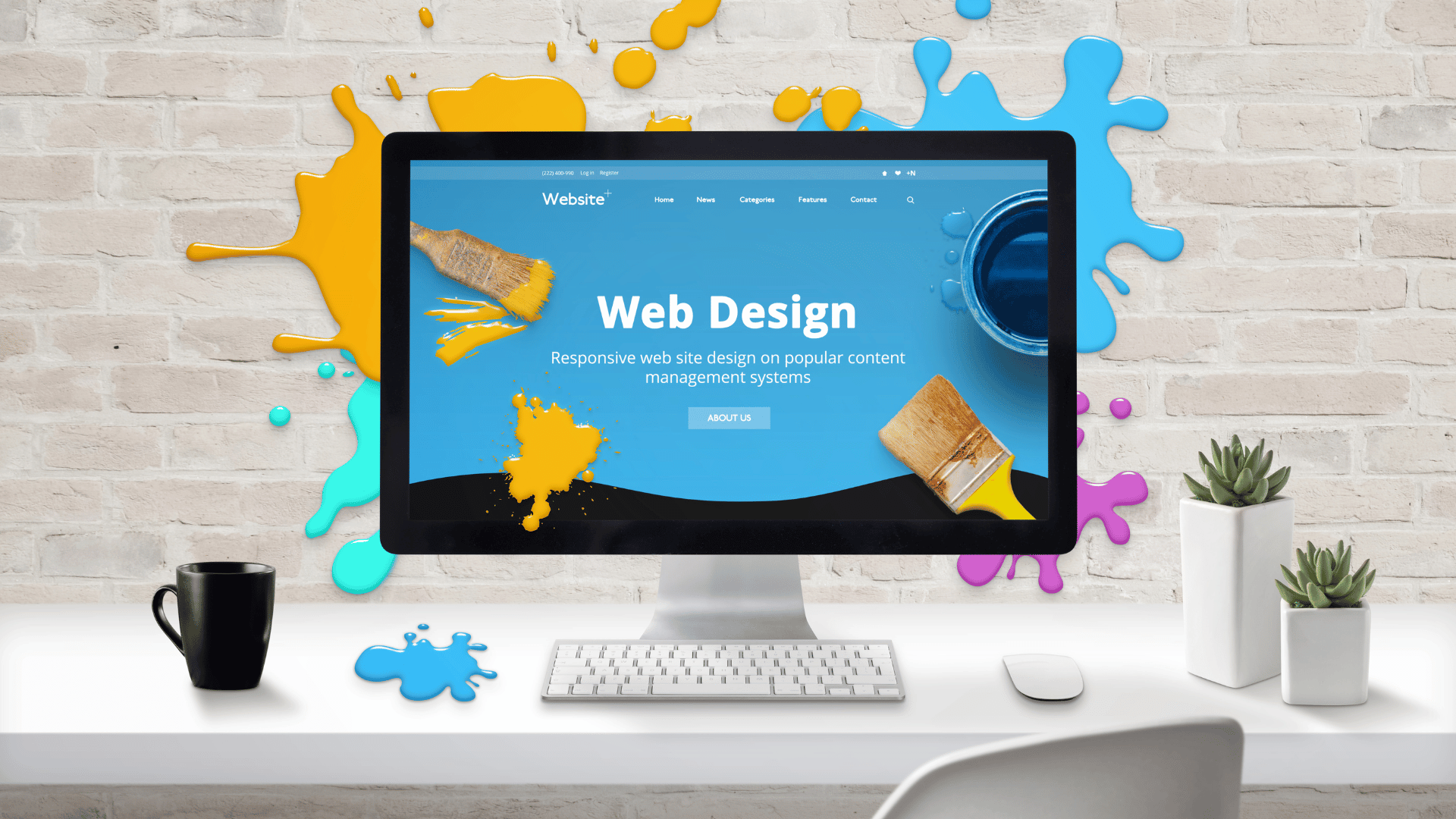Web Design London Ontario Plans for Every Business Size
How to Properly Combine Appearances and Capability in Web Design
When creating a site, you need to strike a balance in between visual appeals and performance. It's not nearly looking great; your layout needs to additionally offer a function and overview users properly. By concentrating on simplicity and instinctive navigating, you can create an engaging experience. But what components really improve usability while keeping visual charm? Let's explore the essential principles that can result in a harmonious blend of appeal and feature.
Recognizing the Importance of Aesthetic Appeals and Capability
Recognizing the balance between aesthetic appeals and capability is vital for producing an effective individual experience when you design an internet site. An aesthetically appealing site grabs focus, but it's the capability that keeps customers engaged. Visitors will rapidly shed rate of interest and leave.Consider your target audience and what attracts them in if your site looks excellent but is difficult to browse. You intend to develop a layout that mirrors your brand while making certain convenience of usage. Structured formats, user-friendly navigation, and clear phone call to activity can improve both looks and functionality.

Principles of Effective Website Design
To create an efficient website design, you require to stick to numerous key principles that enhance both customer experience and visual appeal. Prioritize simpleness; a tidy design aids customers browse easily. Make use of a constant color pattern and typography to maintain coherence throughout your site. This promotes familiarity and trust.Next, ensure your design is responsive. Customers access websites on numerous tools, so your style must adjust flawlessly. Pay attention to aesthetic hierarchy; highlight important aspects with placement, size, or color to assist users' focus.Finally, integrate sufficient white space. It avoids mess and makes material more digestible. Remember, effective website design equilibriums aesthetics and performance, so every design choice ought to offer an objective. By complying with these concepts, you'll create a site that's not just aesthetically attractive but additionally user-friendly, inevitably maintaining site visitors involved and motivating them to return.
Focusing On Individual Experience
When focusing on individual experience, you'll want to start by understanding what your customers absolutely require. Streamlining navigating style can make a huge difference in how easily they locate what they're looking for. Improving visual power structure aids direct their interest to the most important aspects on your website.
Understanding Customer Needs
Recognizing individual requirements is important for developing an appealing internet experience that maintains visitors coming back. To accomplish this, you need to identify the goals and preferences of your target audience. Beginning by conducting individual research, like interviews or studies, to gather insights on what individuals value most. When engaging with similar websites, pay attention to their pain points and difficulties. This info allows you to customize your design, guaranteeing functionality lines up with user expectations. In addition, consider developing individual personas that stand for different sectors of your target market, aiding you picture their needs throughout the style procedure. When you prioritize recognizing customer needs, you produce a site that not only looks great however also delivers a smooth, enjoyable experience that promotes loyalty.
Simplifying Navigating Style

Enhancing Visual Power Structure
A solid aesthetic power structure is vital in directing users through your web site and ensuring they engage with crucial web content. To achieve this, use spacing, shade, and size purposefully. Make important components like headings larger and bolder than body message, drawing interest quickly. Make use of contrasting colors to highlight phone calls to action, urging clicks. Furthermore, employ ample white room to separate sections, making material absorbable and inviting.Consider the circulation of details; set up elements realistically, leading customers' eyes from one factor to the following. Usage aesthetic hints, like arrows or lines, to direct interest. By prioritizing aesthetic hierarchy, you improve individual experience and increase the likelihood of conversions, ensuring your internet site is both visually pleasing and functionally reliable.
Color Concept and Its Impact on Usability
While picking the right shades for your internet site might feel like a small detail, it significantly affects usability and customer experience. Shade influences exactly how individuals regard information and can prevent or improve navigating. For circumstances, contrasting colors can assist vital components stand apart, making it easier for site visitors to find what they need.Additionally, take into consideration the psychology of colors: blue frequently motivates trust, while red produces seriousness. Knowing your target market can direct your color selections, ensuring they resonate well.Moreover, consistent color design aid construct brand name identity, making your web site a lot more remarkable. However, beware-- way too many shades can overwhelm customers. Stick to a limited scheme that complements your material and preserves clarity.Incorporating availability is likewise necessary; verify your shade combinations get along for those with aesthetic disabilities. By attentively using shade concept, you'll boost functionality and develop an extra interesting individual experience.
Typography: Harmonizing Style and Readability
Shade options established the stage for your internet site, however typography plays a just as crucial duty in boosting user experience. You want your message to communicate clearly while also showing your brand name's personality. Start by picking fonts that are not just appealing yet additionally legible. Sans-serif fonts frequently function well for electronic screens, as they're easier to check out at numerous sizes.Maintain a hierarchy by utilizing different typeface sizes and weights; this overviews users via your material easily. Think about line spacing and letter spacing; also limited can annoy viewers, while also loose can interfere with the circulation. Limit your typeface choices to two or three to maintain the style cohesive.Finally, constantly evaluate your typography throughout various devices and internet browsers. What looks great on one screen may out another. Balancing design with readability assurances that your message reverberates, keeping your audience engaged and informed.
Receptive Layout: Making Aesthetic Appeals Service All Tools
To guarantee your site looks fantastic on any gadget, you'll require to embrace receptive layout principles. This strategy assurances your site adapts to different display dimensions, offering an optimal customer experience. Start by utilizing liquid grids and flexible pictures that scale seamlessly. Rather than taken care of measurements, select percents and loved one devices, enabling your design to change dynamically.Next, implement media queries in your CSS. These allow you use different designs based upon device qualities, like screen width. By doing this, you can keep visual allure while assuring functionality.Don' t ignore touch targets; make sure switches and web links are easy to tap on smaller sized screens. Prioritize necessary material, so individuals can conveniently browse your website regardless of their device. By focusing on these aspects, you'll develop an interesting, visually appealing experience that satisfies the demands of all individuals, whether they're on a smartphone, tablet computer, or desktop .
Carrying Out Use Screening for Continuous Enhancement
To boost your website design, you require to set clear functionality objectives that straighten with user requirements. By performing individual examinations, you can collect important feedback on just how genuine individuals communicate with your website. Examining these results will assist you make informed improvements and produce a more efficient user experience.
Specifying Functionality Goals
While aesthetics can attract customers in, defining usability objectives is important for guaranteeing their experience stays rewarding and smooth. Start by recognizing what you desire customers to attain on your site (website design london Ontario). Consider their requirements, habits, and tasks. Are they seeking information, making a purchase, or enrolling in an e-newsletter? Establish clear criteria to measure success, like task completion prices or time our website on task. Prioritize user-friendly navigating, available content, and receptive layout to enhance usability. Consistently revisit these goals as user expectations progress. By defining use goals, you develop a framework for reviewing and improving your web site's efficiency. This concentrate on use not just enhances customer complete satisfaction however likewise strengthens the total efficiency of your layout
Conducting Individual Tests
Carrying out individual tests is crucial for refining your internet site and guaranteeing it fulfills your audience's demands. Begin by identifying your target individuals and developing a test strategy that describes your goals. Utilize a mix of qualitative and quantitative methods, such as studies, interviews, and task-based observations, to gather thorough feedback. Welcome participants to browse your site while you observe their interactions and note any troubles they come across. Motivate open dialogue helpful resources to record their ideas and sensations about the style and capability. Keep sessions brief and concentrated, ensuring you cover essential locations without frustrating users. Lastly, ensure to document all searchings for, as this info will certainly be indispensable for making educated layout decisions that boost both visual appeals and use.
Assessing Test Results
How can you successfully examine the outcomes of your use tests to drive continuous improvement? Beginning by categorizing responses right into common themes. Seek patterns in customer actions that highlight pain factors or locations for improvement. Use measurable data, like job completion prices and time on job, to measure use objectively. Don't forget to consider qualitative insights from user comments; they typically expose underlying concerns that numbers can't show. Prioritize the most impactful findings and develop workable products for your layout team. Remember, it has to do with repeating-- carry out modifications, then test once again. This cycle of testing, analyzing, and refining helps you balance aesthetic appeals and functionality, guaranteeing your web site fulfills customer needs properly while maintaining aesthetic appeal.
Regularly Asked Questions
How Do I Pick the Right Shade Scheme for My Site?
To select the ideal color scheme for your internet site, consider your brand's individuality, target audience, and emotional impact (website design london Ontario). Use shade psychology, produce harmony, and warranty readability. Examination combinations to see what reverberates ideal with visitors
What Equipment Can Assist With Internet Style Visual Appeals and Functionality?
You can make use of tools like Adobe XD, Figma, and Lay out to enhance your internet design's appearances and functionality. These platforms use intuitive interfaces, partnership attributes, and pre-made layouts to enhance your innovative process and improve your layouts.
Just How Can I Incorporate Animations Without Endangering Capability?
To integrate animations without compromising functionality, focus on refined results that boost customer experience. Use CSS computer animations for smoother communications, guarantee fast lots times, and test on different tools to keep performance while adding visual appeal.
What Are Typical Errors to Avoid in Website Design Looks?
When designing, avoid chaotic designs, poor shade options, and inconsistent typefaces. Do not ignore mobile responsiveness, as it can estrange individuals. Verify your design lines up with your brand, creating a smooth experience that involves site visitors successfully.
How Frequently Should I Update My Website's Style for Optimal Aesthetics?
You should upgrade your site's layout every 1-2 years to maintain up with patterns and preserve perfect aesthetics. Frequently restoring visuals assists engage guarantees and find here site visitors your website continues to be enticing and straightforward. When you create a web site, understanding the equilibrium in between appearances and capability is necessary for developing an efficient customer experience. To create an effective web design, you require to adhere to numerous essential principles that improve both individual experience and visual appeal. Customers access websites on various gadgets, so your design must adapt effortlessly. When prioritizing user experience, you'll desire to begin by understanding what your users truly need. Begin by performing customer study, like interviews or surveys, to collect insights on what individuals worth most.